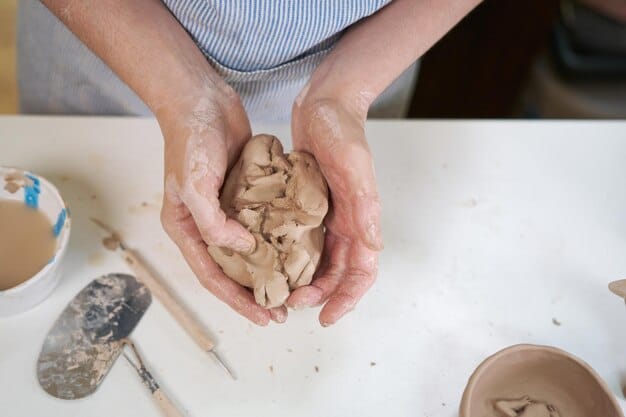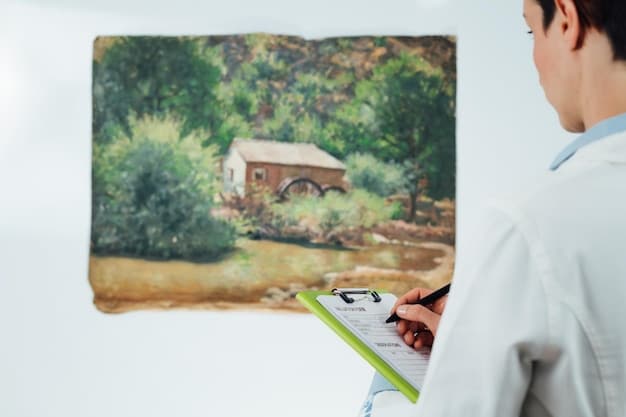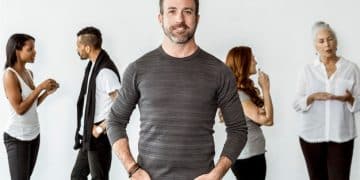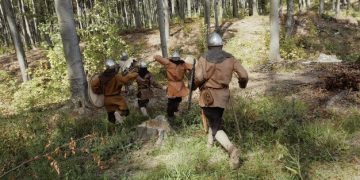The US Artist Healing Veterans with Art Therapy for PTSD

The US artist, Melissa Walker, leverages art therapy to provide veterans with post-traumatic stress disorder (PTSD) a creative and therapeutic outlet for emotional processing and healing.
Discover how the US artist who uses art therapy to help veterans cope with PTSD is making a significant impact. Through creative expression, veterans find a unique path to healing and recovery.
The Healing Power of Art Therapy
Art therapy offers a unique and effective way to address the complex emotional and psychological challenges faced by veterans with PTSD. It provides a non-verbal avenue for processing trauma and promoting healing. The use of art can unlock emotions and memories that traditional talk therapy might not reach, leading to profound breakthroughs.
The approach of using artistic expression helps create a safer space for exploration and communication.
Understanding PTSD in Veterans
Post-traumatic stress disorder (PTSD) is a mental health condition that can develop after experiencing or witnessing a traumatic event. Veterans are particularly susceptible due to their exposure to combat and other stressful situations. Art therapy can be a valuable tool in managing the symptoms of PTSD.
- Flashbacks and nightmares
- Severe anxiety and panic attacks
- Difficulty concentrating and memory problems
- Emotional numbness and social isolation
By utilizing art as a means of expression, veterans can circumvent the barriers often associated with verbalizing their experiences, fostering a deeper connection to their emotions and promoting healing.

Melissa Walker: An Artist Dedicated to Veterans
Melissa Walker is a US artist who dedicates her time and talent to helping veterans through art therapy. Her work is a testament to the transformative power of creative expression. Walker’s commitment goes beyond teaching art; she creates a supportive and understanding environment where veterans feel safe to explore their emotions.
Her background in both art and psychology gives her a unique insight into the therapeutic process. It is important to have someone who truly understands where veterans are coming from.
Walker’s journey began with a deep appreciation for the sacrifices made by military personnel. To help, she combined her love for art with a desire to serve her community, leading her to explore art therapy as a means of support.
Walker’s Unique Approach
Walker’s approach involves a variety of artistic mediums, including painting, sculpting, and drawing. These activities help veterans express emotions and experiences that are often difficult to verbalize. Her guidance is nurturing, encouraging veterans to embrace their creativity without judgment.
- Creating individualized art plans based on veteran needs
- Offering open studio time for independent creative expression
- Facilitating group discussions to build camaraderie and support
Walker’s impact is evident in the stories of veterans whose lives have been positively transformed through her art therapy sessions. Many have reported significant reductions in anxiety and increased emotional resilience, highlighting the profound effects of her work.
The Benefits of Art Therapy for PTSD
Art therapy offers numerous benefits for veterans struggling with PTSD. It provides a non-threatening way to process traumatic memories and emotions. Creative expression can help reduce anxiety, improve mood, and foster a sense of empowerment.
Many veterans find that art helps them to communicate and connect to others by building trust and camaraderie.
Emotional Processing and Release
Art therapy provides a safe and structured environment for veterans to explore and process their emotions. The act of creating art can be cathartic, allowing individuals to release pent-up emotions and reduce feelings of stress and anxiety.
Improved Communication Skills
For many veterans, expressing their thoughts and feelings verbally can be challenging. Art therapy offers an alternative form of communication, enabling them to convey their experiences and emotions in a non-verbal way. This can lead to improved communication skills and enhanced interpersonal relationships.
Art therapy creates stronger bonds.
- Creating a supportive and understanding environment
- Providing opportunities for self-expression
- Reducing feelings of isolation and loneliness

How Art Therapy Differs from Traditional Therapy
Art therapy differs from traditional therapy in several key ways. While talk therapy relies on verbal communication, art therapy uses creative expression as the primary means of communication. This approach can be particularly beneficial for veterans who struggle to articulate their experiences through words.
Art therapy offers a more direct route to access emotions.
Non-Verbal Communication
One of the main advantages of art therapy is its ability to bypass the limitations of verbal communication. Art allows veterans to express emotions and experiences that are difficult to put into words. It taps into the subconscious, revealing hidden feelings and memories.
Enhanced Self-Awareness
The creative process involved in art therapy can enhance self-awareness and introspection. By reflecting on their artwork, veterans can gain insights into their thoughts, feelings, and behaviors. This self-discovery can lead to personal growth and healing.
Deeper conversations with self are essential.
- Providing a more holistic approach to healing
- Focusing on creativity and imagination
- Promoting self-discovery and personal growth
The Impact of Community Support
Community support plays a crucial role in the success of art therapy programs for veterans. Organizations and individuals who provide funding, resources, and volunteer support help ensure that these programs can continue to serve those who have served our country.
Showing our appreciation for those who serve brings support full circle.
Organizations Supporting Art Therapy
There are numerous organizations dedicated to supporting art therapy programs for veterans. These organizations provide funding, resources, and advocacy to help ensure that veterans have access to the mental health care they need.
Volunteer Opportunities
Volunteering with art therapy programs can be a rewarding way to give back to the veteran community. Volunteers can assist with art sessions, provide administrative support, and help raise awareness about the benefits of art therapy. Every effort makes a difference.
Community support enriches lives daily.
- Ensuring long-term sustainability of art therapy programs
- Improving access to mental health care for veterans
- Fostering a sense of community and support
The Future of Art Therapy for Veterans
The future of art therapy for veterans looks promising. As awareness of its benefits grows, more resources and support are being directed towards expanding these programs. Increased research and training opportunities will further enhance the effectiveness of art therapy in helping veterans heal from PTSD.
By increasing engagement and awareness, the future of art therapy will only broaden.
Expanding Access to Art Therapy
One of the key goals for the future is to expand access to art therapy services for veterans. This includes increasing the number of qualified art therapists and establishing art therapy programs in more locations. It also involves reaching out to underserved populations and providing culturally sensitive care.
Integrating Art Therapy into Mainstream Healthcare
Integrating art therapy into mainstream healthcare systems is another important step. This would make art therapy more accessible to veterans and ensure that it is recognized as a legitimate and effective form of mental health treatment. The steps forward are in progress.
With each new discovery, art therapy will continue to expand.
- Developing new and innovative art therapy techniques
- Conducting research to validate the effectiveness of art therapy
- Training more art therapists to work with veterans
| Key Point | Brief Description |
|---|---|
| 🎨 Art Therapy | Provides a non-verbal way for veterans with PTSD to express emotions and heal. |
| 👩⚕️ Melissa Walker | A US artist who uses art therapy to help veterans cope with PTSD, using various mediums. |
| 🤝 Community Support | Crucial for the success of art therapy programs, ensuring resources and support for veterans. |
| 🔮 Future of Therapy | Promising with expanding access, integration into healthcare, and continued research. |
Frequently Asked Questions
▼
Art therapy is a form of psychotherapy that uses creative methods like painting, drawing, and sculpting to help individuals explore their emotions, improve self-awareness, and cope with stress. It’s particularly helpful for those who struggle with verbal communication.
▼
Art therapy provides a non-threatening way for veterans to process traumatic memories and emotions. Creative expression can reduce anxiety, improve mood, and foster a sense of empowerment and control over their experiences, leading to improved mental health.
▼
No, art therapy does not require any artistic skill or talent. The focus is on the process of creating art, rather than the final product. It’s about expressing yourself and exploring your emotions, regardless of your artistic abilities.
▼
Veterans can find art therapy programs through VA hospitals, community mental health centers, and private art therapists who specialize in working with veterans. Online directories and veteran support organizations can also provide valuable resources and referrals.
▼
Community support is crucial for ensuring the sustainability and accessibility of art therapy programs. Funding, volunteer support, and advocacy from the community help provide veterans with the resources and care they need to heal and thrive in post-military life.
Conclusion
The US artist who uses art therapy to help veterans cope with PTSD, like Melissa Walker, is making a profound difference in the lives of those who have served our country. By harnessing the power of creative expression, these dedicated individuals are providing veterans with a unique and effective path to healing and recovery, ultimately fostering resilience and improving mental well-being.





